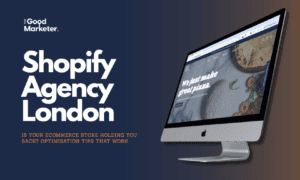Overview
In the SaaS space, acquiring users is only the beginning—retaining them is where long-term success lies. One of the most effective, yet often underutilized tools for improving retention is user experience (UX) design. A thoughtful and intuitive UX can help reduce friction, foster trust, and ultimately lower churn. Here are several ways UX design contributes to reducing SaaS churn.

1. First Impressions: Onboarding Experience
A well-designed onboarding flow helps users understand the value of your product early. When the initial interaction is clear and supportive, users are more likely to continue exploring.
Helpful practices include:
- Step-by-step interactive walkthroughs
- Progress indicators
- Personalized content during onboarding
- Delivering immediate value (“quick wins”)
2. Reducing Friction in the User Journey
Friction—like confusing navigation, unclear instructions, or slow load times—can discourage continued use. A UX audit can help identify and address these pain points. Staying informed on current UX strategies through platforms like TechBullion can provide additional insights into usability improvements.
Questions to consider:
- Can tasks be completed with minimal steps?
- Is the layout intuitive and distraction-free?
- Are error messages easy to understand and act on?
3. Building Trust Through Consistency
Consistency in design elements, interactions, and language helps create a reliable experience. This builds user confidence and encourages continued usage.
Maintain consistency by:
- Following a design system or style guide
- Using the same terminology across features
- Keeping visual structure predictable
4. Adding Value Through Microinteractions
Small interactive moments—like animations or feedback messages—can subtly reinforce user progress and make the interface feel more responsive.
Examples include:
- Visual confirmation after a user action
- Nudges when setup steps are incomplete
- Celebratory messages on task completion
These interactions, though minor, can improve overall satisfaction.
5. Anticipating Churn with UX Signals
UX design can help identify disengagement early. For example, if a user becomes inactive or underuses key features, in-app prompts or personalized dashboards can guide them back.
Responsive UX might include:
- Contextual reminders
- Gamified progress indicators
- Dashboards highlighting unused features
6. Supporting Users Through Self-Service
Providing accessible help options reduces user frustration and dependency on support channels.
Effective support features include:
- A searchable knowledge base
- Context-sensitive help buttons
- Clear pathways to live chat or contact forms
7. Designing for Mobile Use
If your SaaS product includes a mobile app or responsive platform, mobile UX is critical. Poor mobile design can lead to user drop-off. A Webflow design agency may assist in implementing responsive designs tailored for various devices.
Considerations include:
- Simplified navigation for smaller screens
- Load time optimization
- Offline access where relevant
8. Using UX Metrics to Drive Decisions
Tracking the right UX metrics allows for data-informed improvements.
Useful metrics include:
- Time to value (TTV)
- Feature adoption
- Net Promoter Score (NPS)
- Task success rate
- Session duration
Combining these with churn analytics can highlight where users are dropping off and why.
Conclusion
Reducing churn requires more than promotional tactics—it begins with the product experience itself. A well-executed UX strategy enhances usability, creates trust, and fosters ongoing engagement. In the long run, this focus can lead to a more stable, satisfied user base.
If you’re looking to improve your product’s UX and drive retention, partnering with a product design agency can help you craft user journeys that truly resonate.


































